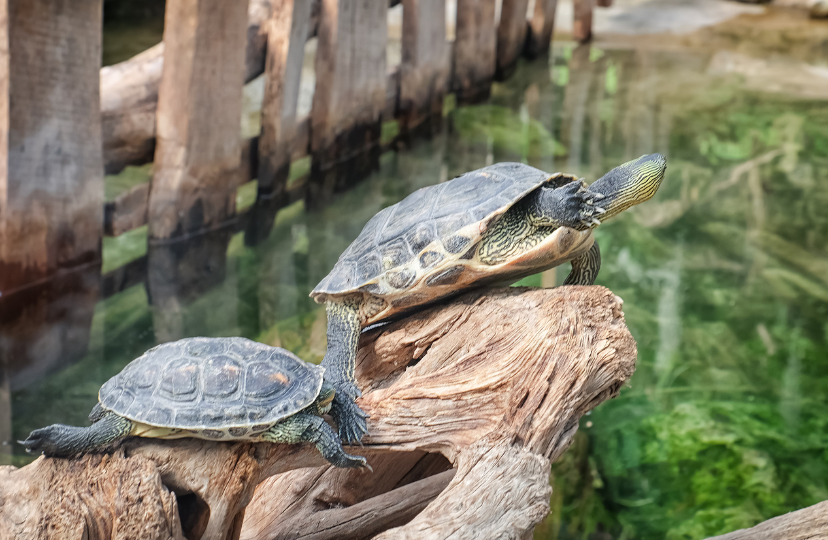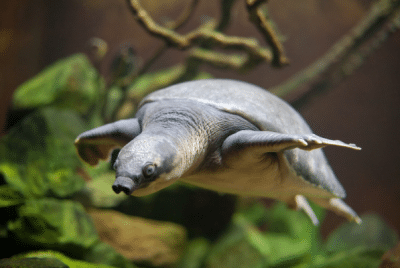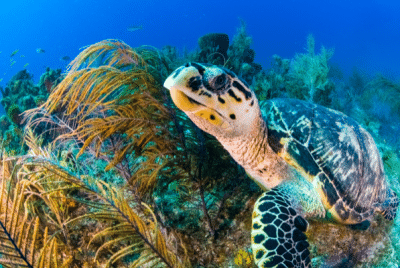Outdoor Tortoise Enclosure: Let’s get building!
Introduction
An Outdoor tortoise enclosure is more than just containment space; it is the home that should replicate a tortoise’s natural habitat. But where do you start? Whether you’re a newbie tortoise parent or a seasoned keeper looking to revamp an existing space, this article is your handy guide.
Understanding Tortoises’ Needs
Tortoises are as diverse as the environments they come from. Understanding their specific needs is the first step in creating an ideal enclosure.

Climate Considerations
Climate considerations for an outdoor tortoise enclosure are akin to tuning a musical instrument; they need to be just right for a harmonious life for your shelled friend. Imagine you’re a guest in a foreign country, and the weather is either swelteringly hot or freezing cold. How comfortable would you feel? The same applies to your tortoise.
Different species of tortoises come from various climates around the world. Some thrive in the dry and hot desert landscapes, while others are accustomed to tropical, humid environments. Knowing the precise natural habitat of your specific tortoise species is the cornerstone of creating an outdoor enclosure that feels like home.
For desert tortoises, like the full grown Sulcata Tortoise, the emphasis should be on providing plenty of sunbathing areas and heat lamps, akin to offering a sun-lover a beach vacation. They require temperatures that mimic the hot, arid desert they hail from.
On the other hand, tropical tortoises such as the Brazilian Red Foot Tortoise need an environment with higher humidity and cooler spots to retreat to, like providing an artist with a tranquil forest retreat. Interestingly the Cherry Head Tortoise, which happens to be in the same family as the aforementioned Red Footed Tortoises, require different living habitat setups depending on whether they originated from the North of the Amazon or the South.
Moreover, considerations must extend to seasonal changes. Think of it as updating your wardrobe for summer or winter. In colder climates, proper insulation, windbreaks, and even heated shelters may be required.
Investing in a weather station to monitor humidity and temperature, and making necessary adjustments, is not just science; it’s an art. It’s about balancing the complexities of the climate with the simple joy of seeing your tortoise thrive in an environment that’s tailored to its needs. It’s like creating a personalized weather paradise, right in your backyard. An outdoor diy outdoor tortoise enclosure, an exciting project for the tortoise lovers indeed.
Space Requirements
Space requirements for an outdoor tortoise enclosure are an essential aspect that demands thoughtful consideration. Think of it as designing a playground; the more room to explore and roam, the happier the child, or in this case, the tortoise. Different species will have varying needs, but as a rule of thumb, an outdoor enclosure should offer enough ground for the tortoise to engage in natural behaviors like digging, grazing, and exploring.
An adequately spacious environment promotes mental and physical well-being. A cramped or confined area, on the other hand, can lead to stress and health issues. It’s like living in a room where you can barely stretch your legs!
The enclosure’s size will depend on the tortoise’s breed, age, and the number of tortoises you plan to house. A small garden-like setup might be suitable for a young small tortoise, while a larger yard-like space would be better for the pets of the largest tortoise breeds, such as a full size Sulcata tortoise. It’s all about letting them live, not just exist.
Safety Measures
Safety considerations for an outdoor tortoise enclosure are paramount; it’s like child-proofing a home for a curious toddler. Tortoises, with their exploratory nature, need an environment that’s secure from potential hazards.
First and foremost, the enclosure must be predator-proof. A strong and tall perimeter wall or fence will keep out unwanted guests like raccoons or foxes, just as a good lock keeps out intruders. Consider digging the fence into the ground to prevent digging escape attempts, much like adding a moat to a castle for extra protection.
Secondly, toxic plants or chemicals must be avoided in the enclosure, as they can be a hidden danger to your tortoise. It’s akin to keeping medicines away from a child’s reach.
Lastly, all water features within the enclosure should have easy access points to prevent accidental drowning. Think of them as gentle ramps to a pool.
In essence, building a safe outdoor tortoise enclosure is about foreseeing risks and acting with caution, ensuring that the environment nurtures rather than threatens. It’s your tortoise’s haven, and you are its diligent guardian.
Basic Outdoor Enclosure Setup
Choosing the Right Location
Choosing the right location for a basic outdoor tortoise enclosure is like picking the perfect spot for your dream home. You’ll need to consider several factors to ensure that your tortoise feels comfortable and thrives in its environment.
First, you must consider sunlight. A location that receives ample natural sunlight will offer a tortoise the warmth it needs. Think of it as choosing a sunny room for your favorite reading chair.
Next, the terrain is vital. You’ll want to avoid low-lying areas that might collect water, akin to avoiding a flood-prone spot for a house. A well-drained, slightly elevated area provides a better environment.
Accessibility is also essential. The location should be convenient for you to observe, feed, and interact with your tortoise, just as you’d want your garden within reach to tend to your plants.
Lastly, consider the natural environment around. A spot with native plants and soil will help replicate the tortoise’s natural habitat, like selecting the perfect wallpaper that resonates with your aesthetics. In the end, it’s all about creating a space that feels like ‘home sweet home’ for your tortoise.
Materials and Construction
Materials and construction requirements for a basic outdoor tortoise enclosure are like the bricks and mortar of building a fort. They form the very foundation of your tortoise’s safety and comfort.
For the perimeter wall, you’ll need strong materials like concrete blocks or treated wood. Think of this as the sturdy walls of a castle that keep unwanted guests out. The walls should be high enough to prevent escape, and you might even consider burying part of them to deter diggers.
Inside the enclosure, you’ll want to use natural, non-toxic substrates like soil, sand, or a mix that mimics the tortoise’s natural habitat. It’s akin to choosing a comfy carpet that feels just right underfoot.
For shelters and hiding spots, untreated wood or large rocks will do the trick. These are like the cozy nooks in your home where you might curl up with a book.
Don’t forget proper drainage to prevent flooding. A slightly sloping terrain, like a well-designed roof, ensures that water runs off.
The goal is to build an enclosure that’s strong, safe, and resembles the tortoise’s natural environment. It’s crafting a piece of nature’s art right in your backyard, where design meets function, and love meets care. Isn’t that a beautiful project to embark on?
Advanced Outdoor Enclosure Setup
Setting up an advanced outdoor tortoise enclosure is like upgrading from a comfortable apartment to a luxurious mansion; it goes beyond the basics to provide an extraordinary habitat for your shelled friend. An advanced setup isn’t just about space and safety; it’s a finely crafted ecosystem that caters to every whim and need of the tortoise.
Imagine integrating automated climate control systems that adjust temperature and humidity to mimic the tortoise’s natural habitat. Think of it as installing central heating and air conditioning for perfect comfort.
Consider adding varied terrain with hills, valleys, and even water features, much like landscaping a beautiful garden. This creates opportunities for exploration and exercise.
High-tech monitoring systems could be installed to keep a constant eye on your pet’s environment, akin to having a security system for your home.
In an advanced setup, every detail is fine-tuned, from the choice of plants to the positioning of sunbathing spots. It’s a blend of technology and nature, built not just to accommodate but to indulge. It’s like turning your backyard into a five-star resort for your tortoise, where life isn’t just good; it’s grand!
Incorporating Natural Elements
Incorporating neutral elements in an advanced outdoor tortoise enclosure refers to integrating components that neither harm nor particularly benefit the tortoise but add to the aesthetic and functional harmony of the enclosure. Think of it as adding decorative yet functional pieces to your home that enhance the overall ambiance.
These neutral elements can include aesthetic landscaping features like ornamental rocks, pathways, or even garden sculptures. They contribute to the visual appeal of the enclosure, like hanging a beautiful painting on a wall. While these features may not directly benefit the tortoise, they can provide barriers and divisions within the enclosure, creating separate zones for various activities.
In some cases, these neutral elements may serve a functional purpose. For instance, a decorative wall can double as a wind barrier, acting like a well-placed bookshelf that cuts a draft in your living room.
Additionally, neutral elements can include non-toxic plants that don’t serve as food but contribute to the natural environment’s appearance and feel. These are akin to the plants you might have in your home, adding life and freshness to the space without being a part of your diet.
Incorporating neutral elements in an advanced tortoise enclosure isn’t merely about aesthetics; it’s about understanding and applying design principles to create a cohesive and stimulating environment. It’s the artistic touch in a scientific endeavor, the melody in the mechanics, and the soul in the structure.
Providing Additional Amenities
Pond
Adding and setting up a pond in an outdoor tortoise enclosure is like installing a personal swimming pool in your backyard. It’s a delightful feature that not only adds aesthetic appeal but also serves functional purposes.
Choosing the right spot for the pond is crucial. You’ll want a location that gets some sunlight but also offers shade, much like finding the perfect spot for lounging by the pool.
The pond’s design must include gently sloping sides, allowing easy access for the tortoise, like building a ramp for ease of entry. The depth should vary, offering both shallow and slightly deeper areas.
Filtration is essential to keep the water clean and fresh, akin to having a purification system for your drinking water.
Non-toxic, native aquatic plants can enhance the pond’s natural feel, just as landscaping adds beauty to your surroundings.
In essence, adding a pond is like gifting your tortoise a natural oasis, a place to swim, soak, and enjoy. It’s not just a feature; it’s a little piece of paradise!
Basking Area
Setting up a basking area in an outdoor tortoise enclosure is akin to crafting a cozy sunroom where your shelled friend can soak up the warmth. This area is essential for the tortoise’s health, as it helps them regulate their body temperature and aids in digestion.
The basking area should be positioned where it receives ample sunlight, like selecting the sunniest spot for your favorite lounge chair. It should be equipped with flat, smooth rocks or platforms that are comfortable for the tortoise to climb on, just as you would choose the most comfortable recliner for your relaxation.
If natural sunlight is inconsistent, supplemental heating may be required. This is like having a heat lamp for those chilly days when you still want to enjoy your sunroom.
A proper basking area is more than just a sunny spot; it’s a carefully crafted haven for your tortoise, an inviting place to rest, recharge, and relish the warmth. It’s their favorite sun-kissed retreat!
Specialized Setups
Different tortoises require specialized setups. It’s about personalizing their space.
Desert Tortoises
When recreating a small slice of the arid wilderness in your backyard, these specific setups must mirror the desert tortoises’ natural, dry environment. Think of it as designing a desert-themed garden where every element contributes to a particular ambiance.
The enclosure should have a well-drained sandy or gravelly substrate, much like the desert floor itself. Shelter from the elements, such as rocks and logs, must be provided to simulate natural hiding spots.
Temperature regulation is vital, with a basking area to mimic the hot desert sun and shaded areas for cooler retreats. It’s like installing both heaters and fans in a room to provide the perfect temperature balance.
Plant life should reflect native desert vegetation, and water should be available but limited, resembling an oasis in a desert landscape.
In essence, every detail of a desert tortoise’s outdoor enclosure is a calculated choice to create a microcosm of their wild habitat, a home away from home!
Tropical Tortoises
For the tropical tortoises, the goal is to create a lush and humid mini-rainforest in your backyard. The setup must replicate the damp and warm natural habitat of the tropics, allowing your tortoise to thrive as if in its native jungle.
The enclosure requires a substrate that retains moisture, like forest soil, to mimic the damp earth of the rainforest. Think of it as choosing the perfect carpet that gives the feel of a tropical forest floor underfoot.
Ample shade and well-placed foliage are essential to provide hiding spots and replicate the dense jungle canopy. Imagine planting trees and shrubs in your garden to create a green, leafy sanctuary.
Water features, like a pond or waterfall, can add to the humidity, much like a fountain adds a soothing element to a tropical garden.
Temperature and humidity control must be maintained to simulate the tropical climate.
Aquatic Tortoises
Creating an outdoor enclosure for aquatic tortoises is like designing a luxurious waterfront property. The environment must cater to their love for water while still providing essential land areas. It’s a blend of beach and ocean in miniature form.
The most prominent feature would be a sizable pond or water area, akin to building an infinity pool that integrates seamlessly with the surroundings. This water space must be equipped with filtration to keep it clean and clear, much like a well-maintained swimming pool.
Gentle slopes leading into the water allow for easy entry and exit, resembling a beach’s gradual descent into the sea.
Basking areas are vital, providing platforms for sun-soaking, like sundecks overlooking the water.
The land portion must include vegetation and shelter, mirroring a coastal landscape, offering both sun and shade.
Maintenance and Care
Cleaning the enclosure is essential, removing waste and debris, much like sweeping the leaves from your garden path. Water features must be kept clean and filtered, akin to caring for a garden pond.
Weather monitoring is vital to provide the right climate conditions, like protecting your most delicate flowers from harsh weather.
The plants and fixtures need to be inspected and maintained, mirroring the pruning and care of a garden’s landscape. Any damage to the enclosure’s barriers must be repaired promptly to ensure safety.
In essence, caring for an outdoor tortoise enclosure is a continuous labor of love, a blend of gardening, housekeeping, and guardianship, ensuring a safe and happy home for your shelled companion!
Conclusion
Building an outdoor tortoise enclosure is an exciting journey. It’s about understanding, creativity, and commitment. With these insights, you are well on your way to creating a space that’s not just an enclosure but a loving home.
FAQs
-
- Can I use any plants in the enclosure? Some plants can be toxic to tortoises, so research specific to your species is essential.
-
- How do I keep the enclosure warm in winter? Utilizing heat lamps and proper insulation can help maintain the right temperature.
-
- Can different species of tortoises share an enclosure? Generally, it’s not advisable as different species have different needs.
-
- How often should I clean the enclosure? Regular spot cleaning with a thorough clean at least once a week is recommended.
- Is it safe to leave my tortoise outside all the time? With proper safety measures and weather considerations, an outdoor enclosure can be a full-time home for your tortoise.
- How often should I clean the enclosure? Regular spot cleaning with a thorough clean at least once a week is recommended.









Comments are closed.